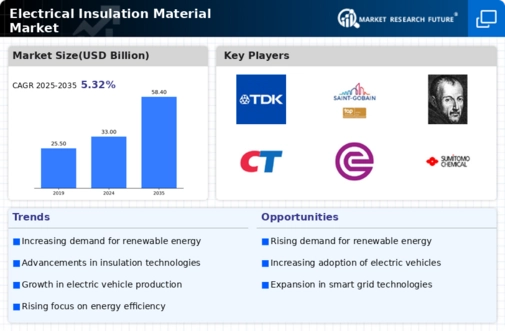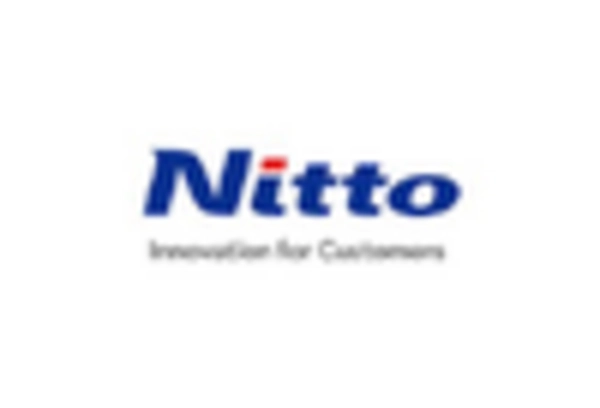Market Trends and Projections
The Global Electrical Insulation Material Market Industry is projected to experience substantial growth over the coming years. With a market value of 33.0 USD Billion in 2024, it is anticipated to reach 58.4 USD Billion by 2035. This growth reflects a compound annual growth rate (CAGR) of 5.32% from 2025 to 2035, indicating a robust demand for electrical insulation materials across various sectors. Key trends influencing this growth include advancements in material technology, increased regulatory pressures, and the rising need for energy-efficient solutions. These factors collectively underscore the dynamic nature of the market and its potential for future expansion.
Stringent Regulatory Standards
Stringent regulatory standards regarding electrical safety and environmental sustainability are shaping the Global Electrical Insulation Material Market Industry. Governments worldwide are implementing regulations that mandate the use of high-quality insulation materials to prevent electrical hazards and minimize environmental impact. Compliance with these regulations often requires the adoption of advanced insulation technologies, which can drive market growth. As industries adapt to these evolving standards, the demand for reliable and compliant insulation materials is likely to increase, further solidifying the market's position in the global economy.
Growth of the Electronics Sector
The expansion of the electronics sector significantly influences the Global Electrical Insulation Material Market Industry. With the proliferation of consumer electronics, electric vehicles, and smart devices, the demand for high-quality insulation materials has escalated. These materials are essential for ensuring the safety and efficiency of electrical components. For example, the automotive industry's shift towards electric vehicles necessitates advanced insulation solutions to manage heat and enhance performance. This trend is expected to propel the market towards a valuation of 58.4 USD Billion by 2035, highlighting the critical role of electrical insulation in supporting technological advancements in electronics.
Rising Demand for Renewable Energy
The Global Electrical Insulation Material Market Industry is experiencing a surge in demand due to the increasing adoption of renewable energy sources. As countries strive to meet sustainability goals, the need for efficient electrical insulation materials in wind turbines and solar panels has become paramount. For instance, the integration of high-performance insulation materials enhances the efficiency and longevity of these systems. This trend is expected to contribute to the market's growth, with projections indicating a market value of 33.0 USD Billion in 2024, reflecting the industry's pivotal role in supporting the transition to greener energy solutions.
Increased Investment in Infrastructure Development
Increased investment in infrastructure development is a key driver of the Global Electrical Insulation Material Market Industry. As nations focus on modernizing their electrical grids and expanding power generation facilities, the demand for high-performance insulation materials is expected to rise. These materials play a crucial role in ensuring the reliability and efficiency of electrical systems. For instance, the construction of new power plants and substations necessitates the use of advanced insulation solutions to withstand harsh operating conditions. This trend is likely to contribute to the market's growth trajectory, as infrastructure projects continue to proliferate globally.
Technological Advancements in Insulation Materials
Technological innovations are driving the Global Electrical Insulation Material Market Industry forward. The development of advanced materials, such as nanocomposites and thermoplastic insulations, offers superior performance characteristics, including enhanced thermal stability and electrical resistance. These advancements not only improve the reliability of electrical systems but also reduce energy losses. As industries increasingly adopt these cutting-edge materials, the market is poised for growth. The anticipated compound annual growth rate (CAGR) of 5.32% from 2025 to 2035 underscores the potential for continued expansion in this sector, as manufacturers seek to leverage new technologies for competitive advantage.

















Leave a Comment